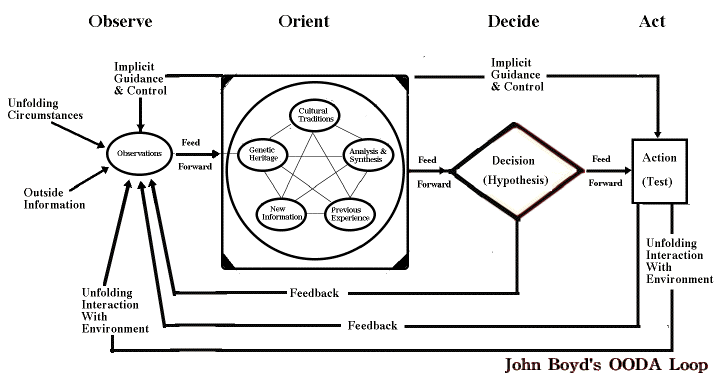caesar's ooda loop
Air Force Colonel John Boyd, one of the most important American military theorists of the late twentieth century, devised a concept he called the 'OODA loop' to describe what makes fighter pilots win. He later generalized this concept into broader tactical, strategic, operational, and even geopolitical arenas, and it still lies close to the heart of the 21st-century American doctrine of war.
The OODA loop is simply the sequence of the following four actions, repeated constantly in battle:
- observe
- orient
- decide
- act
You can glimpse a little deeper more into Boyd's thought in this picture:

The key to victory, says Boyd, is 'getting inside' the enemy's OODA loop -- that is, moving from initial observation to action more quickly than the enemy. Military historians have most thoroughly applied this concept to Alexander the Great -- an extremely aggressive front-line commander whose tactics depended heavily on extreme speed and excellent in-battle communication. The most influential application of the 'OODA loop' concept to Caesar is Kagan 2006, but she does not go into much detail.
TO DO
- Using hypothes.is, highlight passages and label with 'observe' or 'orient' or 'decide' or 'act' or any combination of these four.
- Explain why the agents of each of these observations, orientations, decisions, or actions did what they did.
- Suggest alternative actions based on different observations and orientations and explain what might result from those actions (as opposed to what did result from the actions Caesar and his army and Pompey and his army actually took).